The ocean continues to be a great source of discovery and fascinates many people. With a fascinating environment of wildlife, beautiful plant life, the underwater world contains many “wonders” that amaze us.
Let’s take a look at 50 images that capture these beautiful moments from this mysterious world: the ocean.
The biggest fish in the world.

The image of a woman swimming alongside a whale shark, the largest fish in the ocean, creates a truly impressive scene.
Despite their enormous body size (possibly larger than a bus), they do not hunt and prefer to eat plankton. And to do this, whale sharks swim and breathe through their mouths.
Shrimp have a speed bump

This brightly colored crustacean is the peacock mantis shrimp. They are usually red in females and more colorful in males.
They strike their prey with a punch fast and powerful enough to shatter the glass wall of an aquarium.
The “heart” of the Great Barrier Reef
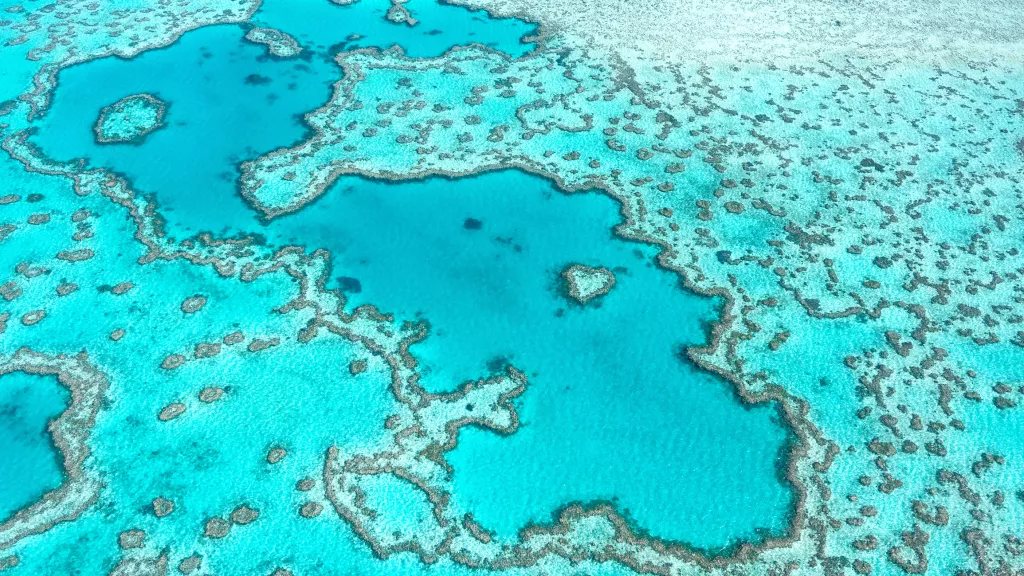
Considered the largest coral system in the world, the Great Barrier Reef is made up of more than 3,000 individual reefs and 900 islands off the east coast of Australia.
And one of them has a heart-shaped reef. This reef belongs to the Whitsunday Islands. And since it’s a heavily guarded area, you can only see it from above.
Green turtle

Image of a green sea turtle swimming in the Great Barrier Reef in Queensland, Australia.
This species can live up to 80 years and reach a length of 5 feet (1.5 meters).
“living fossils”

The photo is a close-up of a crinoid, a kind of starfish, and sea urchins. They are called living fossils because they are present and have existed for more than 459 million years to the present day.
The photo was taken on a coral reef in the Northern Mariana Islands.
fish vortex
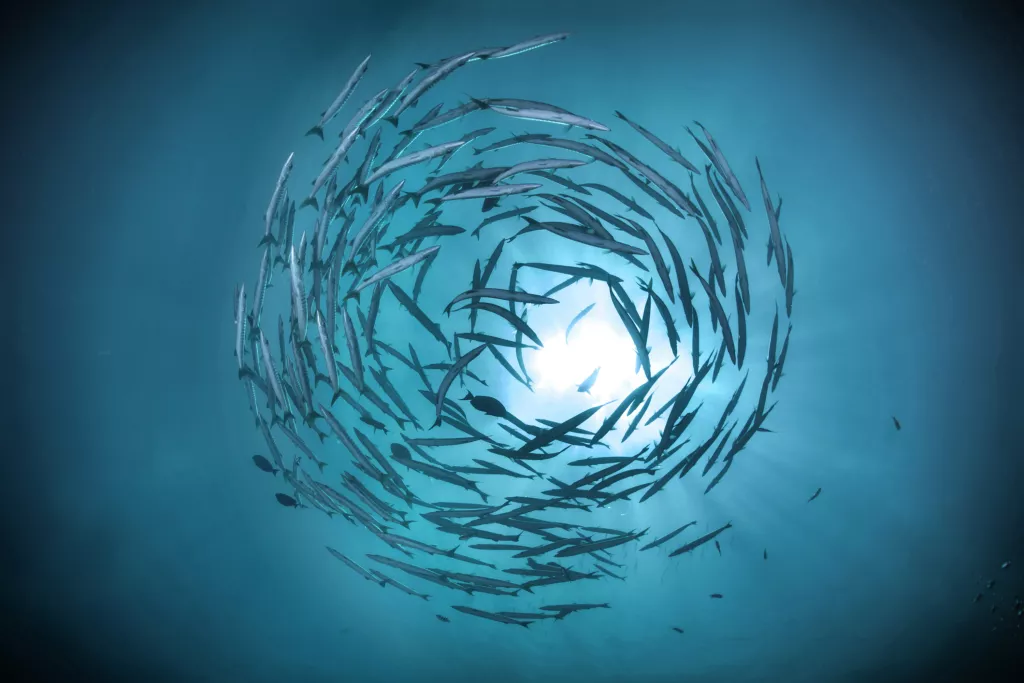
This stunning photo captures the moment a school of barracuda is twisted into a vortex.
They are the fastest fish in the world with a flight speed of up to 36 mph (58 km/h).
“curious” dolphin

As one of the most popular dolphin species, the bottlenose dolphin impresses with its ever-smiling face and inquisitive “personality”.
They can live up to 60 years and communicate with humans by whistling.
“fake” hedgehog

Pencil urchins are commonly found on the bottom of coral reefs, lagoons, or seagrass.
This photo captures the moment a pencil urchin at Kingman Reef in the Pacific Marine National Monument.
Palau seaplane wreckage

This nearly intact wreck of the Jake seaplane sank in World War II.
It lies 45 feet (almost 14 meters) on the ocean floor off the coast of Palau, Micronesia.
“Fast” sea lions

The California sea lion is faster than any other sea lion. They can swim at 25 mph (40 km/h) and lower their heart rate to dive for up to 10 minutes.
The coral is shaped like a brain.

This close-up image of a coral reef with an end similar to a human brain was taken in Dry Tortugas, Florida.
Its deep grooves form large circular structures more than 6 feet (1.8 meters) in diameter.
Shallow waters

The two-yen Pacific butterflyfish dominate the shallows here. They are usually found in shallow waters with strong currents.
Swim with sharks

These two beautiful gray sharks swim among colorful anthias on Jarvis Island, far from the Maritime National Monument. Males of this species can grow up to 4.8 feet (1.5 meters) long.
Pacific purple sea urchin

This particular species of sea urchin is covered in spines that cover its body. They get food and defend themselves with these purple tubes and spikes.
marine “trap”
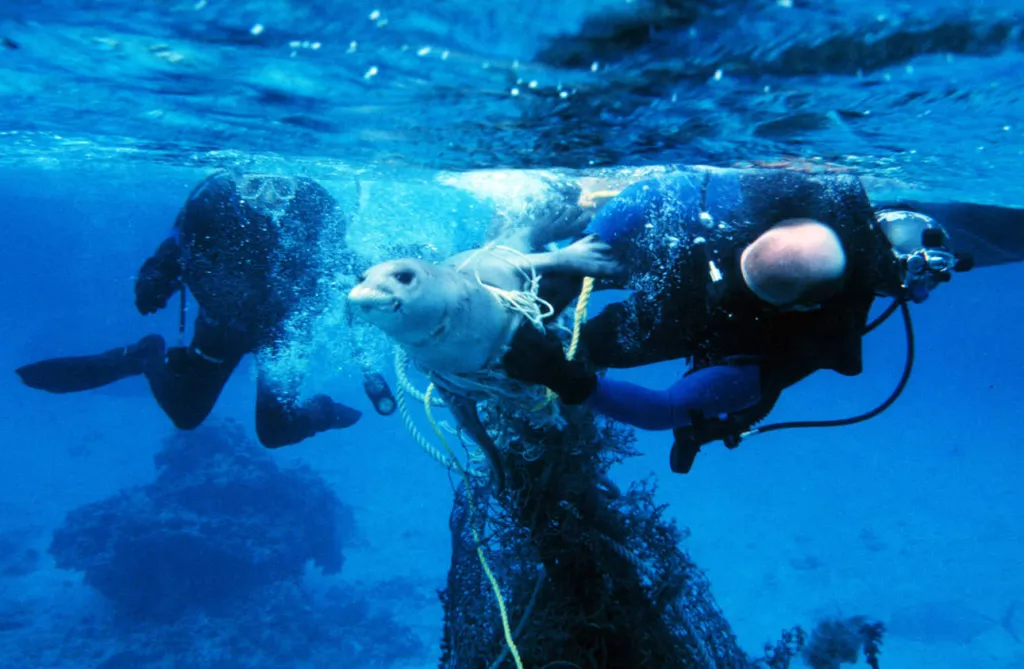
A seal got caught in a fishing net and was rescued by divers.
Marine debris like this can harm marine life and pose a hazard to passing ships.
Stripe “smiling”
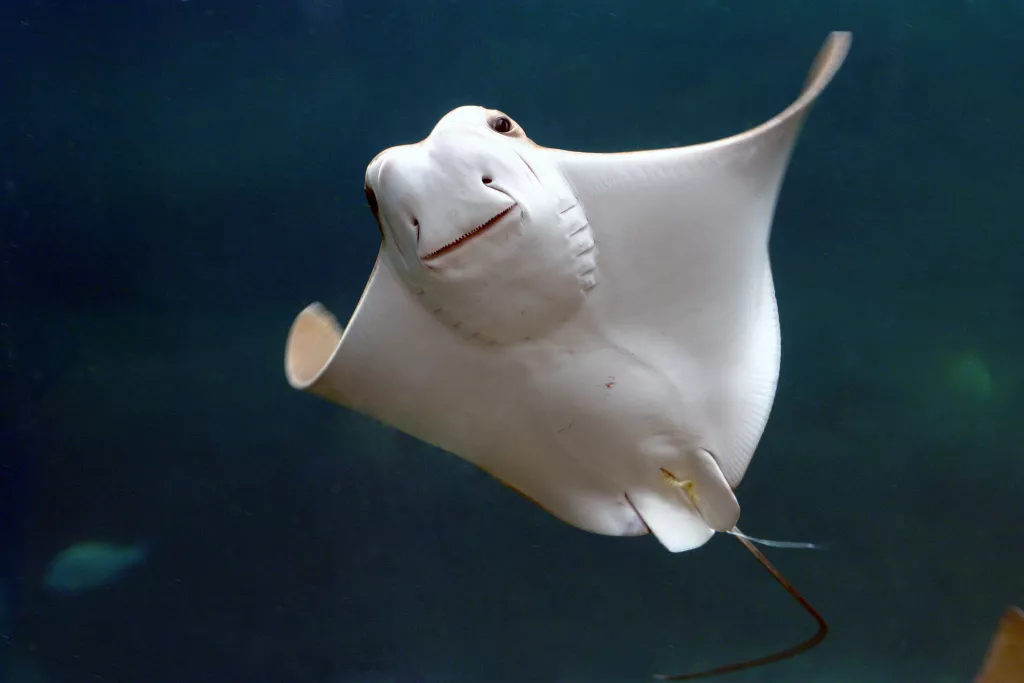
Manta rays do not have bones in their bodies, instead they make cartilage flexible. They also have gel-filled “sensors” that help them detect electrical signals from other animals as they move.
“Squatting” on the coral

This photo captures the moment a lobster crouches on top of a group of gorgonians called Lophelia pertusa.
This photo was taken during a NOAA expedition in Roatán, Honduras, to study the relationship between host corals and the species that depend on them.
looking for prey

This photo captures the hunting scene of a blackhead shark taken from above. According to the Florida Museum of Natural History, this fish tends to prey on small fish while swimming in large schools by going through a “wall” of fish. feathered frogfish
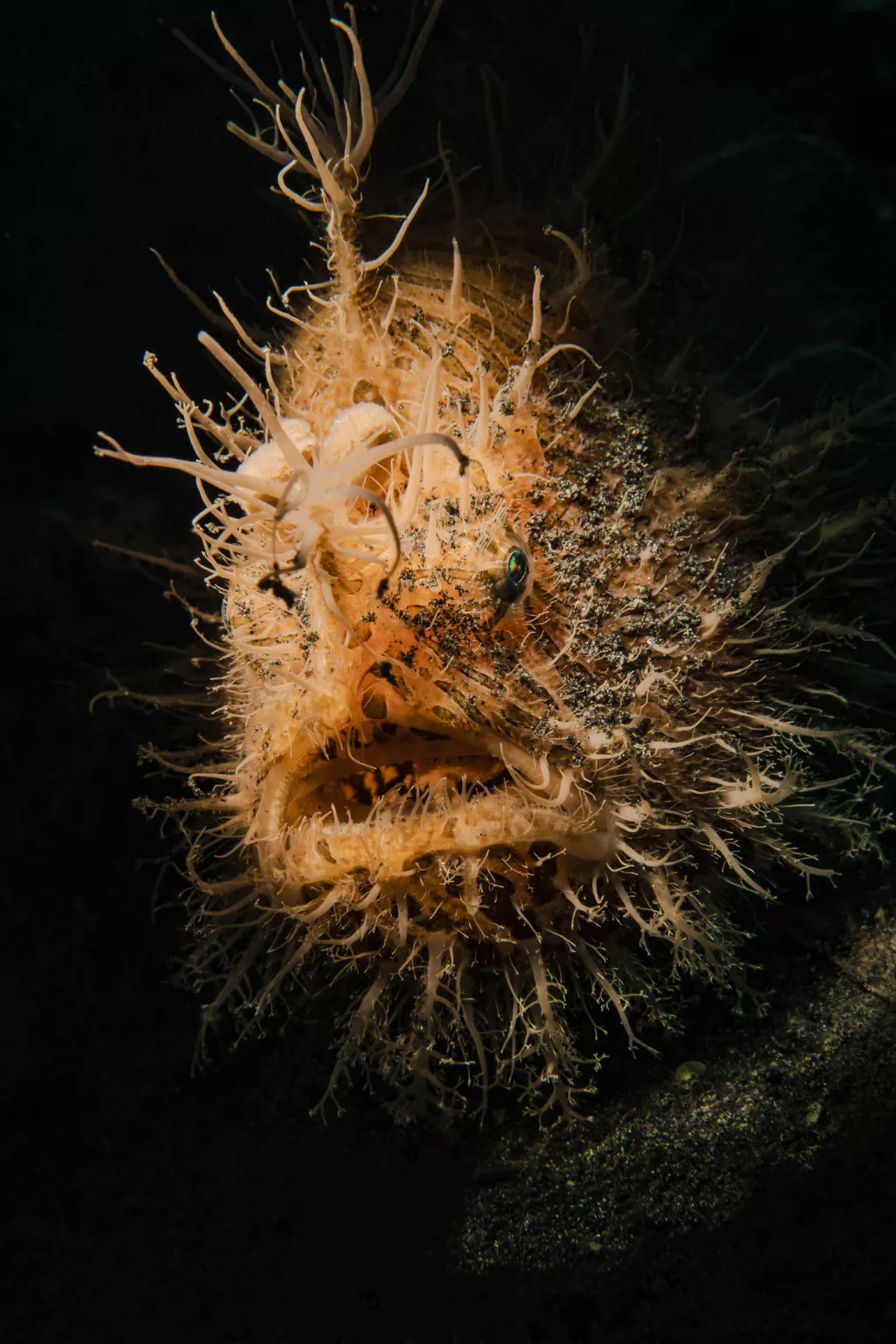
This unique looking creature is the Hairy Frogfish. They do not have scales, but fleshy, hair-like spines.
They have the ability to change color to blend in with their surroundings.
Clownfish “hugging” each other
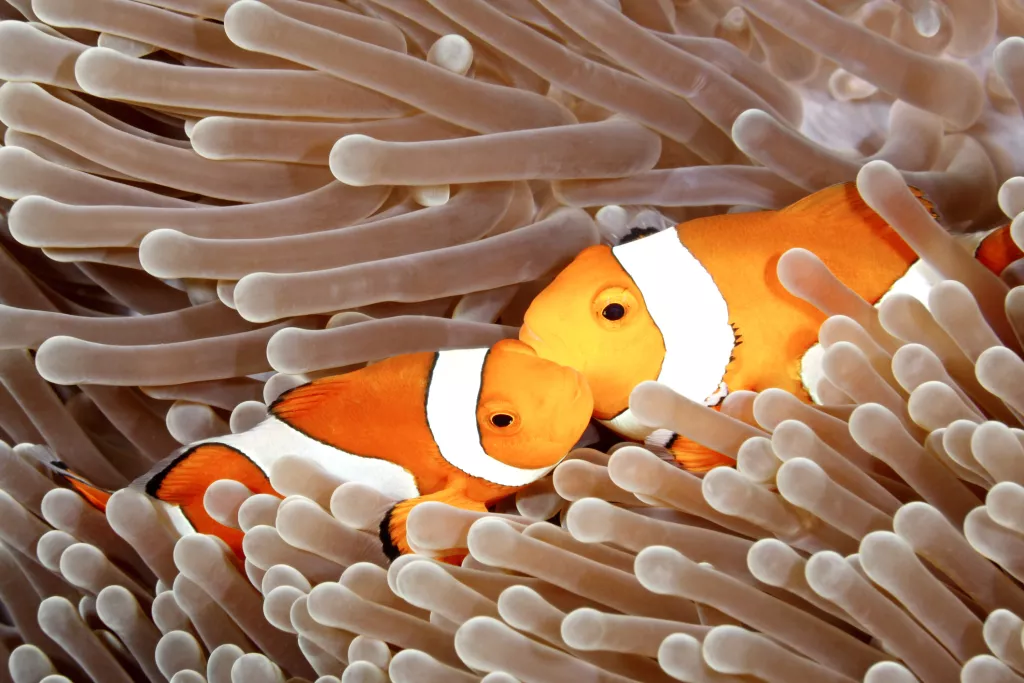
Forget “Finding Nemo”, these two clownfish win the cute race while snuggling between the tentacles of the anemone. Mucus covers the body of this fish to protect it from the stinging cells of the anemone.
underwater adventure

A diver explores the Flower Garden Banks National Reserve in the Gulf of Mexico. The area is one of 14 protected by the NOAA Office.
great white shark

In the photo, a great white shark (Carcharadon carcharias) swimming off the island of Guadalupe, Mexico.
Cases of great white sharks attacking humans are rare, instead humans are the biggest threat to this species.
According to Oceana, a nonprofit organization that protects the ocean, great white sharks are being caught accidentally when fishing and are in danger of extinction.
jesus christ statue

The original bronze statue of Jesus Christ made by hand by Guido Galletti is found on the seabed between Camogli and Portofino (Italy).
The “big eyes” at Rapture Reef

These bright red bigeye fish swim around Repture Reef in the Hawaiian Marine National Monument.
Most bigeye fish are carnivorous and nocturnal.
Blowfish

A puffer fish was photographed while swimming off the island of Moorea, Polynesia (France).
There are more than 120 species of puffin, and most of them contain a potentially deadly poison called tetrodotoxin. This poison is 1,200 times stronger than cyanide, and the amount of toxin in one puffer fish can kill 30 people.
poisonous octopus

One of the most venomous octopus species in the world, the blue-ringed octopus has colorful blue rings when agitated.
Its venom is 1,000 times stronger than cyanide, and this tiny creature contains enough venom to kill 26 adults in a matter of minutes.





